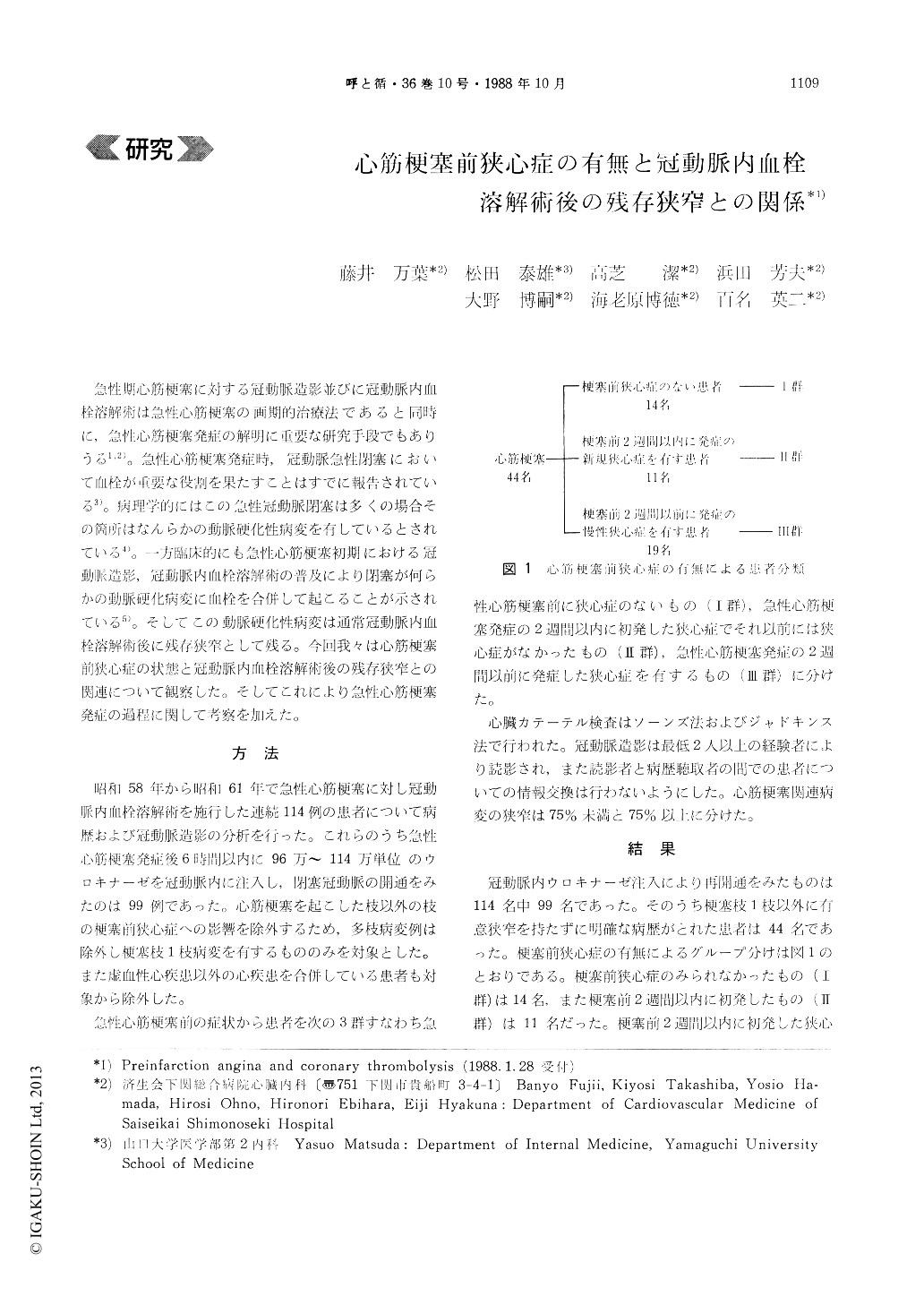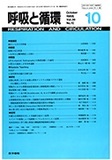- 有料閲覧
- 文献概要
- 1ページ目
急性期心筋梗塞に対する冠動脈造影並びに冠動脈内血栓溶解術は急性心筋梗塞の画期的治療法であると同時に,急性心筋梗塞発症の解明に重要な研究手段でもありうる1,2)。急性心筋梗塞発症時,冠動脈急性閉塞において血栓が重要な役割を果たすことはすでに報告されている3)。病理学的にはこの急性冠動脈閉塞は多くの場合その箇所はなんらかの動脈硬化性病変を有しているとされている4)。一方臨床的にも急性心筋梗塞初期における冠動脈造影,冠動脈内血栓溶解術の普及により閉塞が何らかの動脈硬化病変に血栓を合併して起こることが示されている5)。そしてこの動脈硬化性病変は通常冠動脈内血栓溶解術後に残存狭窄として残る。今回我々は心筋梗塞前狭心症の状態と冠動脈内血栓溶解術後の残存量狭窄との関連について観察した。そしてこれにより急性心筋梗塞発症の過程に関して考察を加えた。
In order to observe the relation between the presence of angina before myocardial infarction and the degree of residual stenosis after coronary thrombolysis, we analyzed symptom and coronary arteriography in 44 patients with successful coronary thrombolysis for acute myocardial infarction.
In 19 patients with angina before myocardial infarction, 14 patients had a residual stenosis more than 75%, while 5 patients had a residual stenosis below 75%. On the other hand, in 25 patients without angina before mycardial infarction, 5 patients had a residual stenosis more than 75%, while 20 patients had a residual stenosis below 75%.
Thus, patients with angina before myocardial infarction may have myocardial infarction with the thrombus formation overlapped to the significant stenosis. Patients without angina before myocardial infarction may have myocardial infarction predomi-nantly caused by thrombus formation.

Copyright © 1988, Igaku-Shoin Ltd. All rights reserved.


